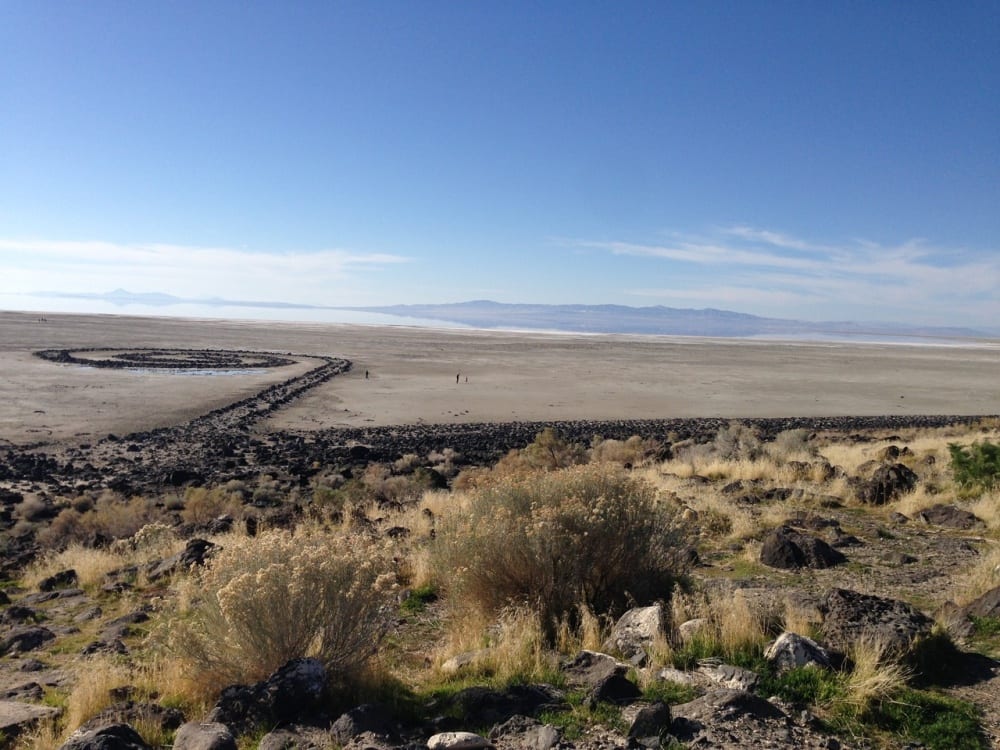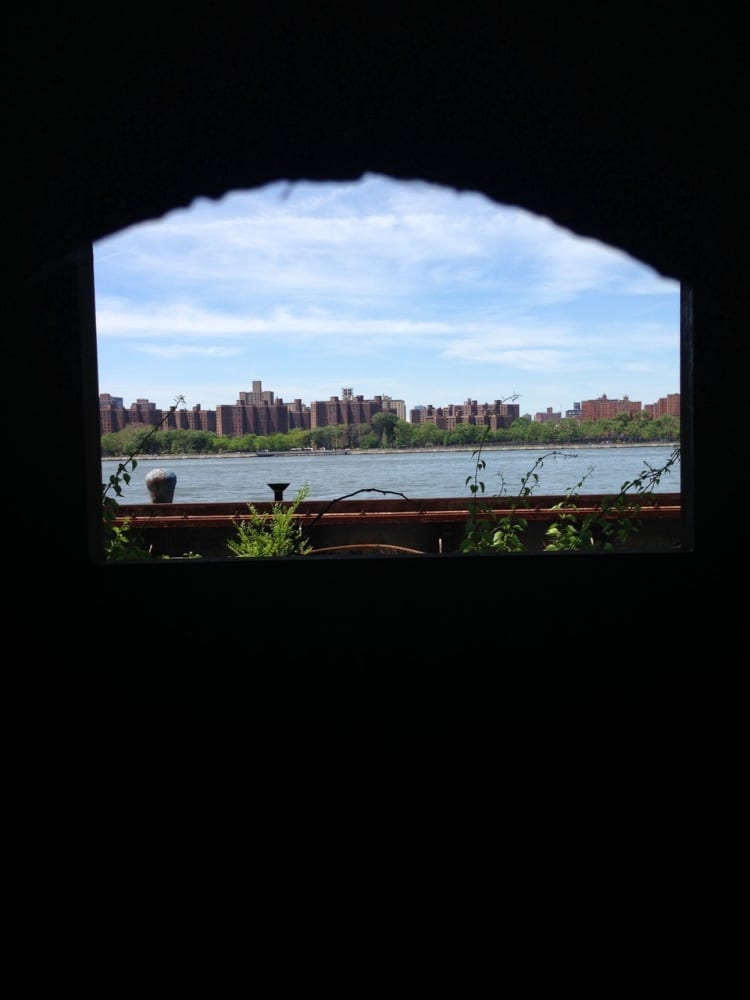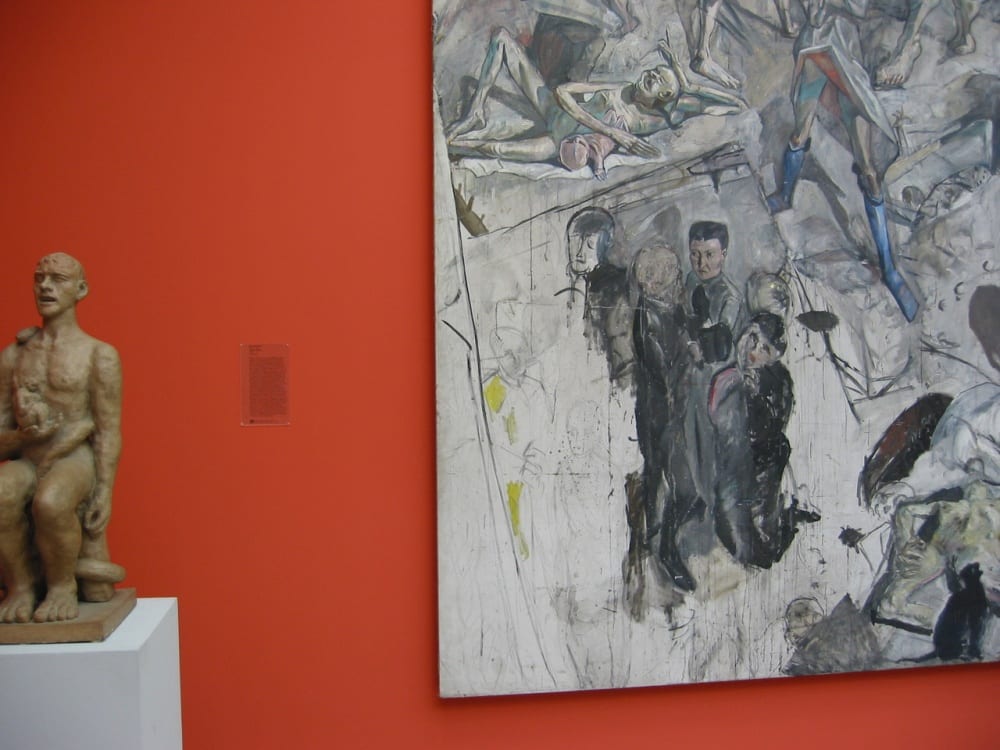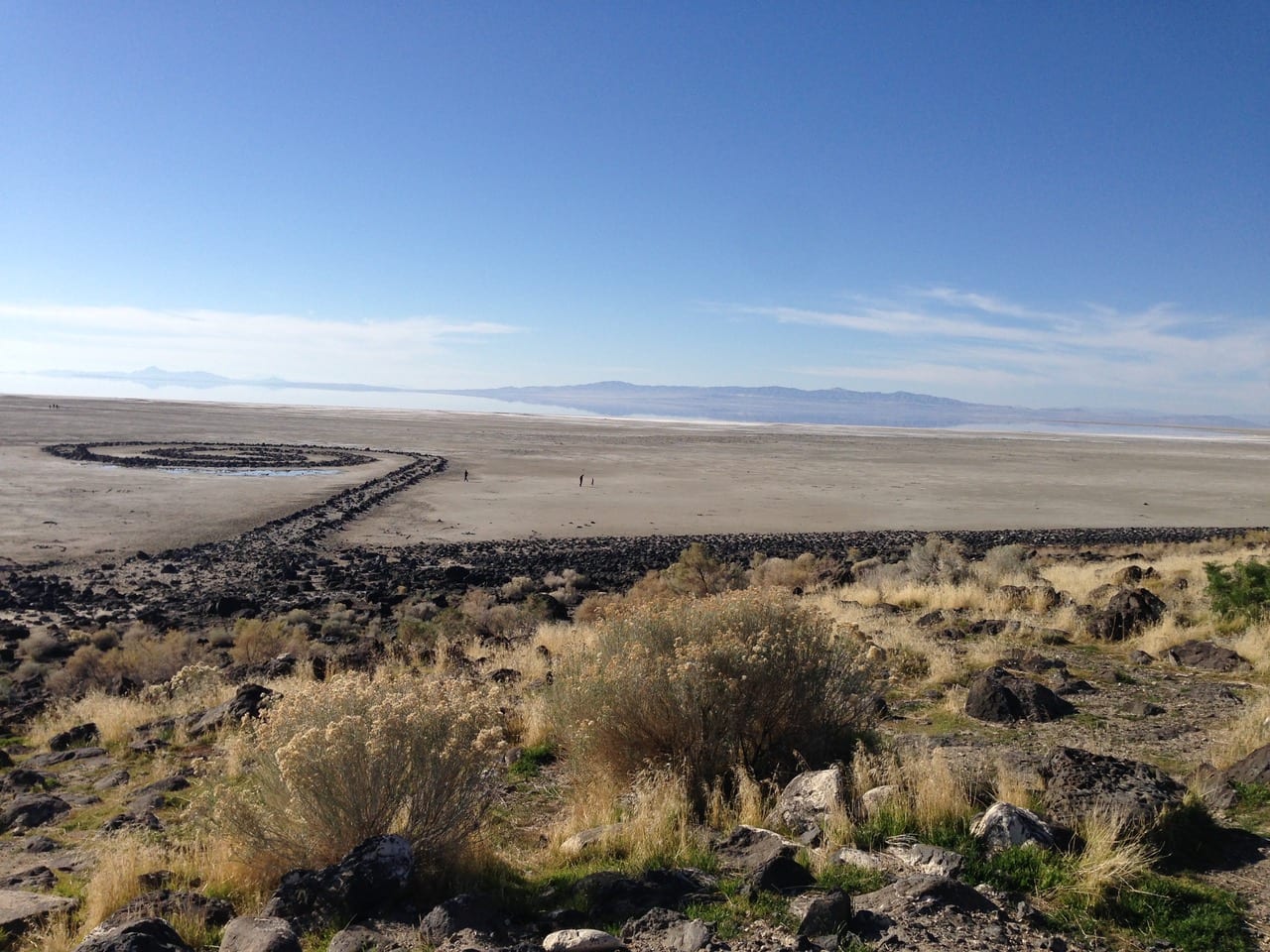In June 2018, Art Journal Open ran “Beyond Survival,” an open call for reflections on the state of public funding for the arts and humanities. We heard from educators, art collectives, arts administrators, activists, and others, working in all quarters of the arts and humanities. In October, convener Sarah Kanouse organized and published the responses in thematic groupings, noting that public funding was only a subset of the support systems considered by those who responded to the call. Equally urgent and necessary, these contributors demonstrated, were social structures and other alternative models for supporting creative work that might fall through the cracks of institutionalized earmarks and metrics. Based on many conversations during that process, we invited a small group of respondents to elaborate their ideas into new essays, which will be published over the coming months. The series kicks off with “Beyond Survival in Art and Art History: Fifteen Futures Already Alive” by Amy K. Hamlin, which offers fifteen propositions for “thinking otherwise.”
—Rebecca K. Uchill, Editor in Chief, Art Journal Open
This set of fifteen propositions is an elaboration on the ideas seeded in “Shaping the Change,” my response to “Beyond Survival: Public Support for the Arts and Humanities.” I was motivated to cultivate those ideas by thinking alongside Octavia E. Butler within a pedagogical frame, because I believe the classroom to be one of the last sanctuaries for thinking otherwise. There are typically fifteen weeks in a semester in US institutions of higher education. I see this text as a sort of imaginary syllabus.1
1.
Question: How are you shaping change?
Answer: “Kindness eases Change.” —Octavia E. Butler2
2.
When I stepped out of the James B. Duke House that morning, I was greeted by a glorious late summer day. Not yet autumn, but a certain coolness tempered the warm air. The light from the cloudless sky cast everything in strange relief. I had just heard the news on the radio, and was struggling to comprehend what was happening in lower Manhattan. In what I can only describe as an act of denial, I hurried to the Met in search of a slide of Rosa Bonheur’s painting The Horse Fair, part of the museum’s permanent collection. Back then we relied heavily on slides to teach our discipline, those two-by-two-inch tiles of plastic or cardboard framing transparent facsimiles of this or that work of art. The slide library at NYU’s Institute of Fine Arts, where I was a graduate student at the time, contained only a handful of slides depicting works by Bonheur. Improbably, The Horse Fair was not among them. Professor Linda Nochlin was teaching a course called “The Big Picture” that semester and required a copy. As her teaching assistant, I had recently promised to produce one.
I ascended the steps of the Met against the steady flow of visitors and tourists being asked to evacuate. My lanyard identification from the Institute allowed me inside. I made straight for the second floor of the main gift shop. As I approached the two attendants behind the counter, they looked up in surprise. My question must have seemed absurd; two planes had just struck the Twin Towers. “I’m sorry, but we no longer sell slides of works in the permanent collection.” On any other day, this message would have been a disappointment. The revelation that the slides were no longer produced suggested a potential pedagogical inconvenience. It was, at the same time, a minor heuristic event. It directed my attention back to the big picture, now within reach, and the larger issues that lay beyond the walls of the museum and the canon it harbored.
3.
Teaching art and art history on indigenous land, one must first acknowledge the histories of that land. I have begun to welcome students to the semester of learning in this way: “Let us begin by being mindful that we are gathered on the traditional land of the Dakota People, who have lived here for hundreds of years.” Intentional repetition throughout the semester, with help from students to expand the statement through inquiry and research, can transform what might otherwise be a mere performance of piety into an expansion of awareness, an accountability to history, and learning in community. Authentic acknowledgment catalyzes connections between people. As “an invitation to deeper analysis, relationship, and action,”3 acknowledgment has the potential to animate community responsibility through engagement with the narratives, histories, languages, and ways of knowing of Indian Nations and tribes, many of which are threatened and have been violently erased by settler colonialism.
Question: What does this have to do with the teaching of art and art history?
Answer: Everything.
4.

5.
January term, 2019, St. Catherine University. This course—ARTH4000: Introduction to the Methods of Art History—is also a thought experiment in speculative fiction. Octavia E. Butler’s 1993 novel Parable of the Sower is the touchstone for our work in this seminar to envision the future of art and art history beyond survival. We will imagine a lost chapter of the novel that describes the burning of a museum. Faced with the opportunity to salvage artworks from the museum’s galleries, Lauren Oya Olamina and her band of survivors must quickly determine what to save for the future of humanity. By thinking with Butler, and her Earthseed tenets, we will each select an artwork in the Minneapolis Institute of Art to save and interpret with tools provided by a dying discipline known as art history. How will the central questions of the discipline change in this post-apocalyptic world? How will it change Lauren’s first Earthseed community? How will the artworks they’ve chosen, remnants of lost societies and survivors of modern institutions that could not, at last, be sustained, function in Acorn and beyond?
6.
In July 2018, the College of St. Benedict and St. John’s University co-hosted Liberal Arts Illuminated, an action-oriented brain congress of administrators, faculty, and staff that aimed to reframe the narrative of liberal education in the United States.4 As a kind of summary of the conference, I offer some key questions posed, and a few statements made, by a selection of the presenters.
- “I hope that the liberal arts will help us be more humble.” —Freeman Hrabowski
- “What would a mentoring institution look like?” —Buffy Smith
- “If you don’t know your data, then how can you close your equity gaps?” —Tia Brown McNair
- “How do students come to complexity?” —Lee Knefelkamp
- “How is this conversation a foundation for future conversations?” —Buffy Smith
- “How can we serve our community when we are not mentored or cared for?” —Mary Dana Hinton
- “Did you ask a good question today?” —Freeman Hrabowski
7.
James Baldwin said that “the purpose of art is to lay bare the questions hidden by the answers.”5
8.

9.
The unbearable whiteness of art history. As with many humanities disciplines, art history is conditioned by the ideologies of whiteness and white supremacy. In his 2017 TED Talk, painter Titus Kaphar offers a call, disguised as a cautionary tale, to art historians complicit in these ideologies.6 He asks us to acknowledge the persistence of absent narratives in our field—particularly the erasure of black and brown bodies in European and American art—and to amend master narratives. Kaphar’s talk builds on this implicit call, and is embedded in its title: Can art amend history? Both the assumption behind and the interrogative mood of the sentence are significant. (Art) history needs amending.
We must ask better questions by claiming a culture of inquiry over mastery.7 We must do this through radical pedagogical practices and courageous curricular revisioning. The term mastery (as opposed to, say, expertise) is key, because of what it reveals about the stultifying politics of conventional pedagogies and the myriad ways they thwart efforts to decolonize the curriculum. One way to understand mastery, according to the Oxford English Dictionary, is as a kind of “superiority or ascendancy in battle or competition, or in a struggle of any kind; victory resulting in domination or subjugation; an instance of this, a victory.” Such thinkers as Paulo Freire, bell hooks, and Jacques Rancière tell us that education in a culture of mastery risks perpetuating intersecting systems of oppression that are as internalized as they are antithetical to authentic learning. Ultimately, we must practice not knowing, and learning with—rather than teaching to—our students in order to create the possibility of a future that is different from the present.
“Earthseed
Cast on new ground
Must first perceive
That it knows nothing.” —Octavia E. Butler8
10.
This future is not about mastery. This future is about inquiry.
11.
In February 2014, Karen J. Leader and I launched the project Art History That with the intention “to curate, crowdsource, and collaborate on the future of art history.”9 We’ve signal-boosted promising initiatives and voices; we’ve organized panels and presented papers; we’ve published reflections and exhortations; we’ve participated in task forces and collaborated with peers. Throughout, we’ve challenged ourselves to listen deeply and to recognize that we don’t have answers—only some suggestions. In my view, a key achievement and ongoing experiment of our collaboration has been to encourage participation in a collective exercise of literary wish-fulfillment. Inspired by Claes Oldenburg’s 1961 non-manifesto “I am for an art,” our crowdsourced manifesto invites individuals to complete the sentence “I am for an art history that…”10 We’ve received a wide range of contributions from mentors, students, colleagues, friends, and strangers. Read together, the growing manifesto is an aspirational allegory that testifies to the heterogeneous concerns and interests of art historians past, present, and future. Read aloud, in public or private, it makes room for imagining what the discipline might yet be and what it might yet do, while recognizing that some knowledge should and must not be instrumentalized. I am for an art history that daydreams.
12.
When the historian and artist Giorgio Vasari published Lives of the Most Eminent Italian Architects, Painters, and Sculptors from Cimabue to Our Times in 1568, he and his readers could not have anticipated the capacity for future technology to simultaneously reproduce and deconstruct his encyclopedic model for modern art historical practice. His hagiographies of artists of the Italian Renaissance—mostly white men—center whiteness and patriarchy on a grand scale. By insisting on the sacrality of the artist and his oeuvre, he privileged a notion of genius that persists to this day. As of December 29, 2018, the Wikipedia entry for Harriet Powers began in this way:
Harriet Powers (October 29, 1837–January 1, 1910) was an African-American slave, folk artist, and quilt maker from rural Georgia. She used traditional appliqué techniques to record local legends, Bible stories, and astronomical events on her quilts. Only two of her quilts are known to have survived: Bible Quilt 1886 and Pictorial Quilt 1898. Her quilts are considered among the finest examples of nineteenth-century Southern quilting. Her work is on display at the National Museum of American History in Washington, DC, and the Museum of Fine Arts in Boston, Massachusetts.11
Whereas Vasari endorsed a discrete aesthetic dogma (imitation of nature), Wikipedia presumes no such thing. And although Powers more than meets Wikipedia’s notability requirements for entries on people, those very requirements risk reifying the hagiographic canon.12 Two steps forward, one step back.
Question: What have you done for art history lately?
Answer: Edit Wikipedia.13
13.

14.
In 1954, the Marxist philosopher Ernst Bloch published the first of three volumes dedicated to The Principle of Hope, which was the title of that ambitious enterprise. Writing from his post as the chair of Philosophy at the University of Leipzig, he began his introduction on an existential note: “Who are we? Where do we come from? Where are we going? What are we waiting for? What awaits us?”14 Postwar anxieties and fears no doubt prompted such questions, and Ernst proposed more than idle solipsistic solutions. For the principle of hope to take up residence in the imagination, Bloch endorsed daydreaming—not of the escapist variety, but the provocative and teachable sort. The kind that remained vigilantly trained on what is possible, “on what is right.” In that vein, he also recommended thinking. He wrote: “Thinking is venturing beyond.”15 In fact, he framed it in these terms: “Denken heißt überschreiten.”16 The verb überschreiten may be variously translated as: to venture beyond, to transcend, to trespass, to transgress.
15.
At the beginning of Parable of the Sower, Butler writes, “Prodigy is, at its essence, adaptability and persistent, positive obsession. Without persistence, what remains is an enthusiasm of the moment. Without adaptability, what remains may be channeled into destructive fanaticism. Without positive obsession, there is nothing at all.”17
In 1999, Darby English composed a short statement for Brent Sikkema Gallery titled “Question Marks and Futures Already Alive: Glenn Ligon and Kara Walker, Together for the First Time.” The subtitle of this essay is indebted to this.
Amy K. Hamlin is a professor of art history at St. Catherine University. Amy also currently serves as the director of the Evaleen Neufeld Initiative in the Liberal Arts. In 2014, she cofounded with Karen J. Leader the project Art History That, which aims to curate, crowdsource, and collaborate on the future of art history.
- As such, it is very much in the spirit of Jane Sprague’s edited volume Imaginary Syllabi (Berkeley, CA: Palm Press, 2011). ↩
- Octavia E. Butler, Parable of the Sower (New York: Warner Books, 1993), 167. ↩
- The U.S. Department of Arts and Culture, “Honor Native Land: A Guide and Call to Acknowledgement,” 2017, 9 (downloadable guide at https://usdac.us/nativeland/). ↩
- For more information on the conference, and for access to the post-conference publication, see “Reframing the Narrative: Leadership Toward Inclusive Excellence,” at https://www.csbsju.edu/liberal-arts-illuminated. ↩
- James Baldwin quoted in Claudia Rankine, Citizen (Minneapolis: Graywolf Press, 2013), 115. ↩
- Titus Kaphar, “Can Art Amend History?” TED Talk, April 2017, at https://www.ted.com/talks/titus_kaphar_can_art_amend_history?language=en. ↩
- For further reflection on the enterprise of mastery within postcolonial discourse, and how we might yet survive its epistemological hold, see Julietta Singh’s Unthinking Mastery: Dehumanism and Decolonial Entanglements (Durham and London: Duke University Press, 2018.) ↩
- Butler, Parable, 179. ↩
- Art History That, at https://sites.google.com/site/arthistorythat/. ↩
- Art History That, “I am for an art history that…,” at https://sites.google.com/site/arthistorythat/art-history-that-manifesto. See also Amy K. Hamlin and Karen J. Leader, “Art History That! A Manifesto for the Future of a Discipline,” Visual Resources: An International Journal of Documentation 30, vol. 2 (June 2014): 138–144. ↩
- “Harriet Powers,” Wikipedia, at https://en.wikipedia.org/wiki/Harriet_Powers. ↩
- For more information on Wikipedia’s notability guidelines, see https://en.wikipedia.org/wiki/Wikipedia:Notability. ↩
- The Art + Feminism campaign is the best place to begin; see http://www.artandfeminism.org/. For a reflection on how to integrate the campaign into your classroom, see Amy K. Hamlin, “Approaching Intellectual Emancipation: Critical Reading in Art, Art History, and Wikipedia,” in Critical Reading Across the Curriculum, Volume 1: From Theory to Practice: Literature, Humanities, and the Arts, ed. Robert DiYanni and Anton Borst (Hoboken, NJ: Wiley Blackwell, 2017), 104–122, and Hamlin, “Art History, Feminism, and Wikipedia,” Art History Teaching Resources Weekly, December 11, 2015, at http://arthistoryteachingresources.org/2015/12/art-history-feminism-and-wikipedia/. ↩
- Ernst Bloch, The Principle of Hope, vol. 1, trans. Neville Plaice, Stephen Plaice, and Paul Knight (Cambridge, MA: The MIT Press, 1986), 3. ↩
- Ibid., 4. ↩
- Ernst Bloch, Das Prinzip Hoffnung, vol. 1 (Frankfurt: Suhrkamp erlag, 1959), 2. ↩
- Butler, Parable, 2. ↩

